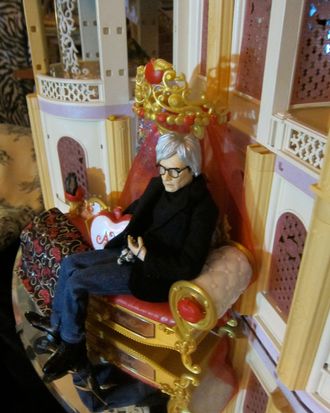
The first time I visited writer-collector Beauregard Houston-Montgomery at his floor-through on St. Marks Place, his collection of dolls and dollhouses had pretty much taken over. The Warhol acolyte has been on a giant editing binge, so now you can see what his apartment really looks like — and what it looked like in the late 1890s, when the building was built as a rooming house.
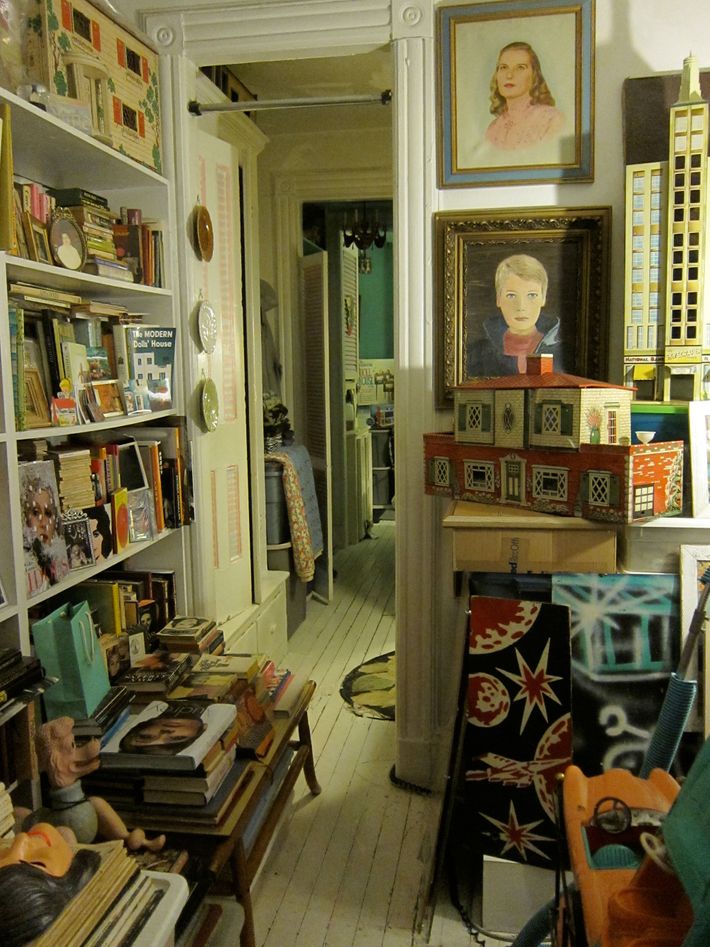
Beauregard Houston-Montgomery’s stories of his early life in New York in the late 1970s prove that truth is stranger than fiction: “It was 1976, and I was living on Fifth and 9th Street in a building that was then like Rosemary’s Baby — I mean, they found a human head in the garbage room of my floor the day I moved in. It went downhill from there,” he recalls. That led him to find his current apartment, a four-room railroad, for which he paid $38 a month when he found it in 1976. This is the library-storeroom, where a portrait of Beauregard’s mother hangs above a portrait of Mia Farrow, painted by a retired Bronx Supreme Court judge and found in a thrift shop in the East Village.
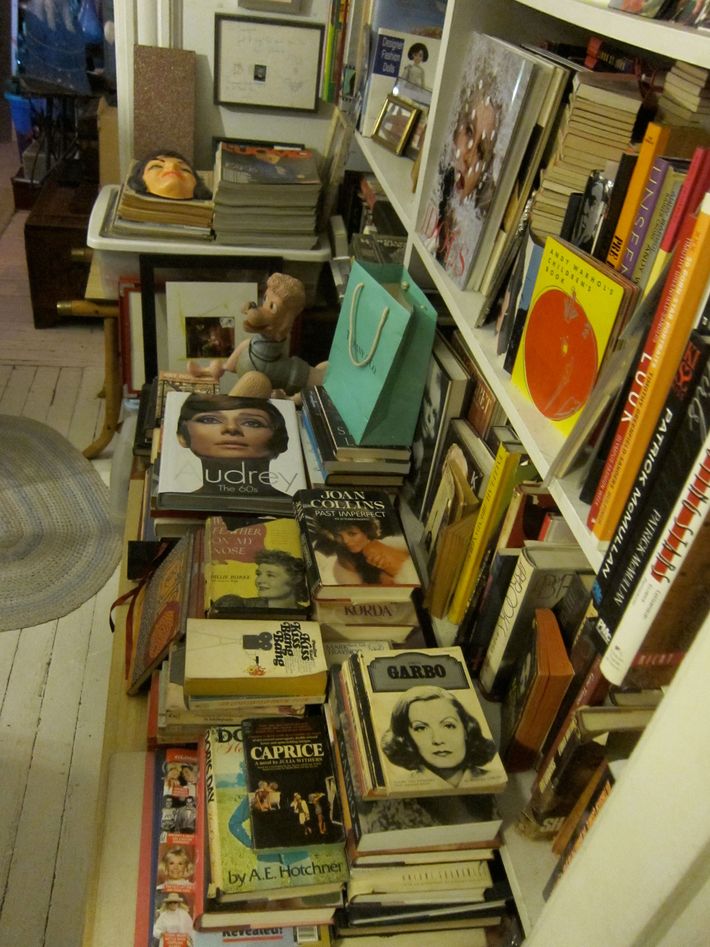
This room holds books on dolls, Hollywood, and social history as well as fashion magazines. There are also fascinating vignettes that Beauregard started collecting when he’d go to flea markets with Andy Warhol in the 1980s.
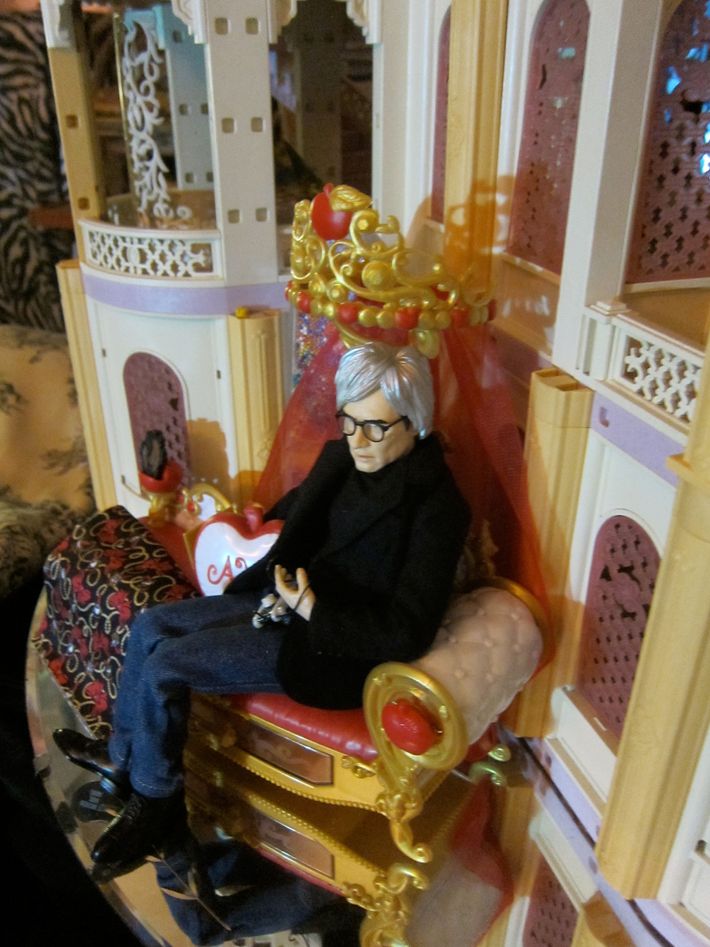
When I spied this Andy Warhol doll, Beauregard told me that it was one of the few dolls he actually displays. “Dolls in groups can be unsettling, to say the least. He is sitting on a decadent lounge that I just found at Kmart, in front of one of my favorite dollhouses, from Playmobil. It reminds me of the little palace in which Gulliver [Kerwin Matthews] lived, from one of my favorite films, The 3 Worlds of Gulliver, a film all about scale!”
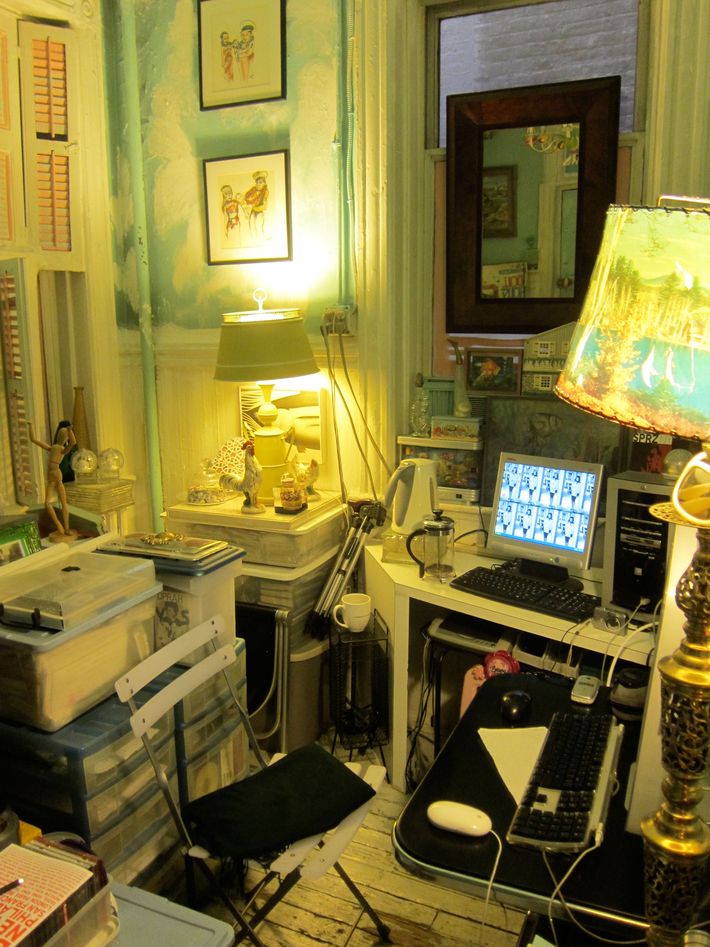
This room, the “preelectric kitchen” of the apartment, is now Beauregard’s office and photo archive. “Cooking was never my forte,” he says. “The original kitchen featured a wood-burning stove and an icebox. The hallway dumbwaiter was obliterated when the beautiful slate floors and woodwork in the halls were removed as a ‘cost-effective’ measure some years ago.”
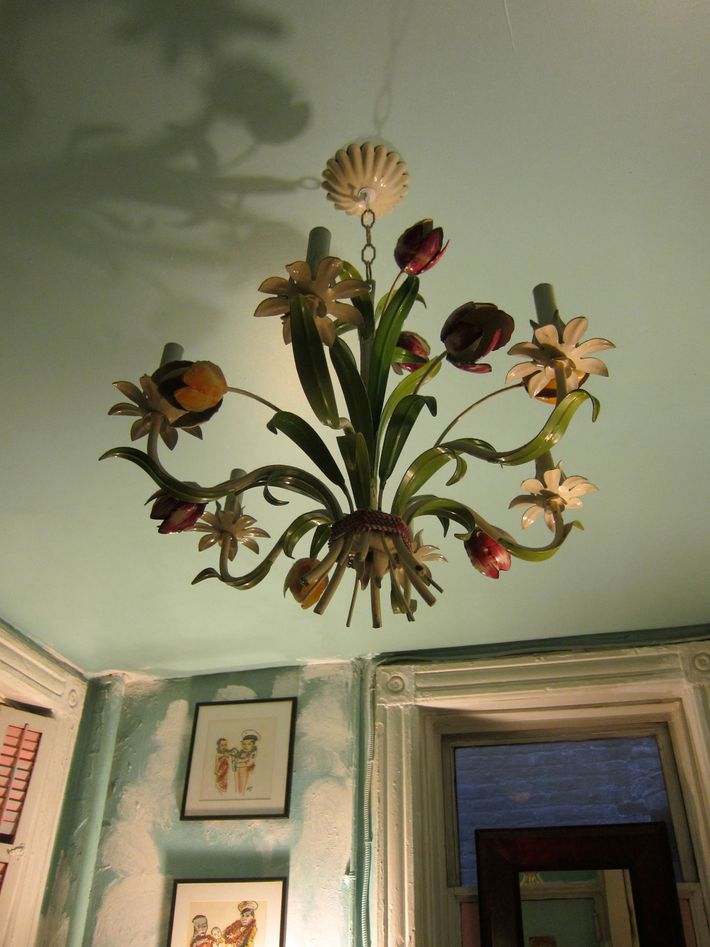
“I love tole,” Beauregard says. “I’ve loved chandeliers since I started going to movies as a child and soaked up Hollywood Regency consciousness. I bought this one at a wonderful, long-gone shop on Fourth Avenue because of the tulips, which reminded me of Andy Warhol’s memorial service. I still regret not getting the hydrangea version hanging next to it.”
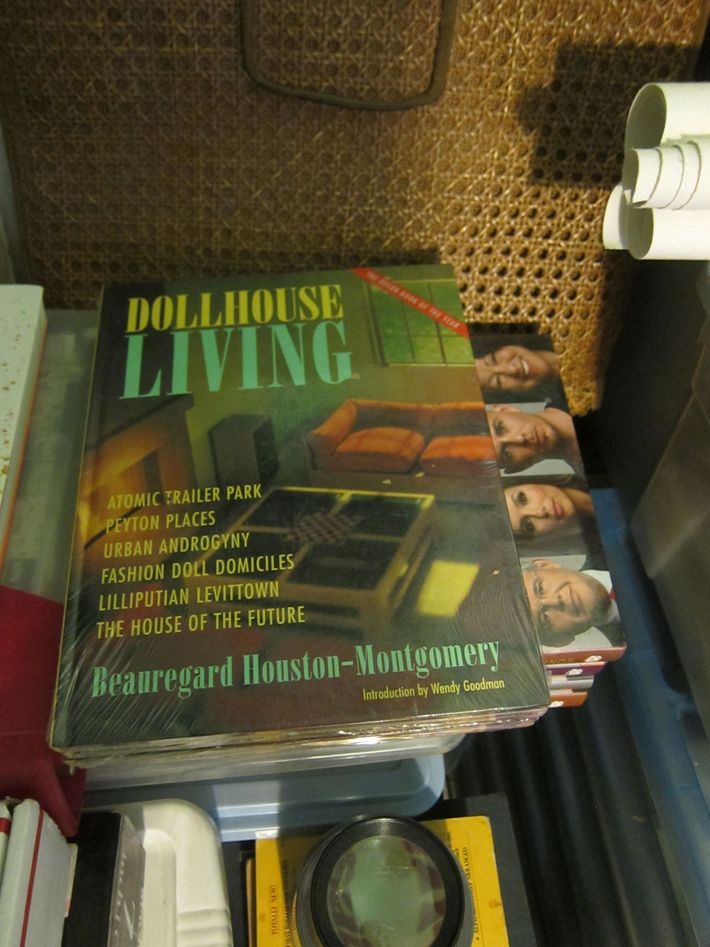
Beauregard is a collector and historian of all things doll- and dollhouse-related. His book Dollhouse Living (intro written by yours truly) speaks for itself with the cover lines. It was Andy Warhol who inspired Beauregard’s collecting—the two would go to the flea market together. Beauregard’s godfather, John Darcy Noble, was the curator of toys at the Museum of the City of New York — so the die was cast.
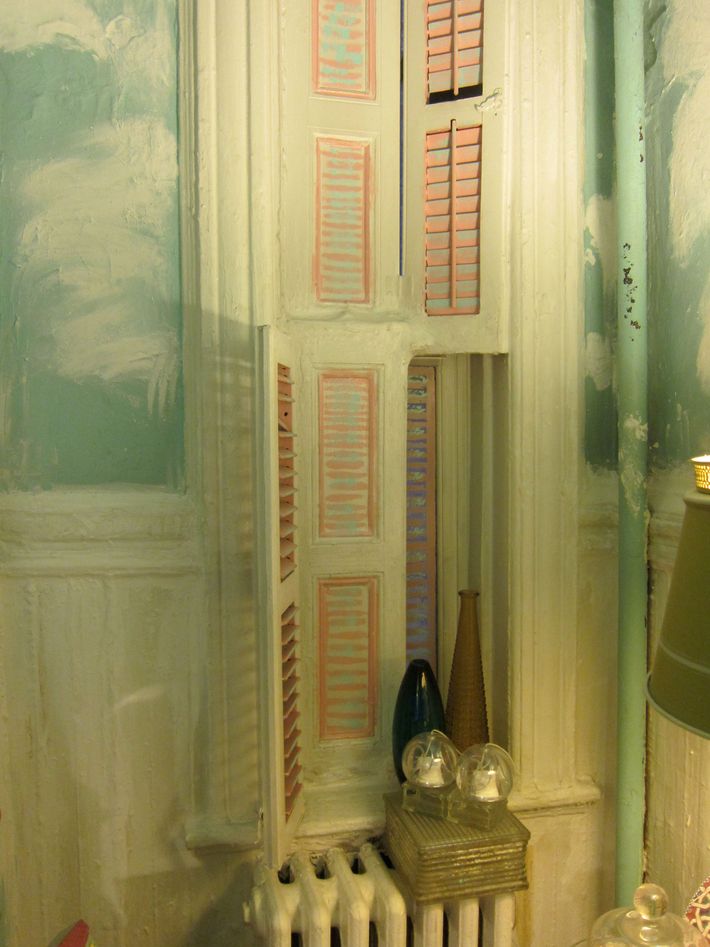
The window shutters in Beauregard’s office were, he explains, “schlepped out of a dumpster: I painted them and literally plastered them to my windows for security. The ‘clouds’ are actually plaster, as I had started to repaint before the leak upstairs began to pour through the window. Everything is in ‘pardon our appearance’ mode until I find just the right Dorothy Draper turquoise!”
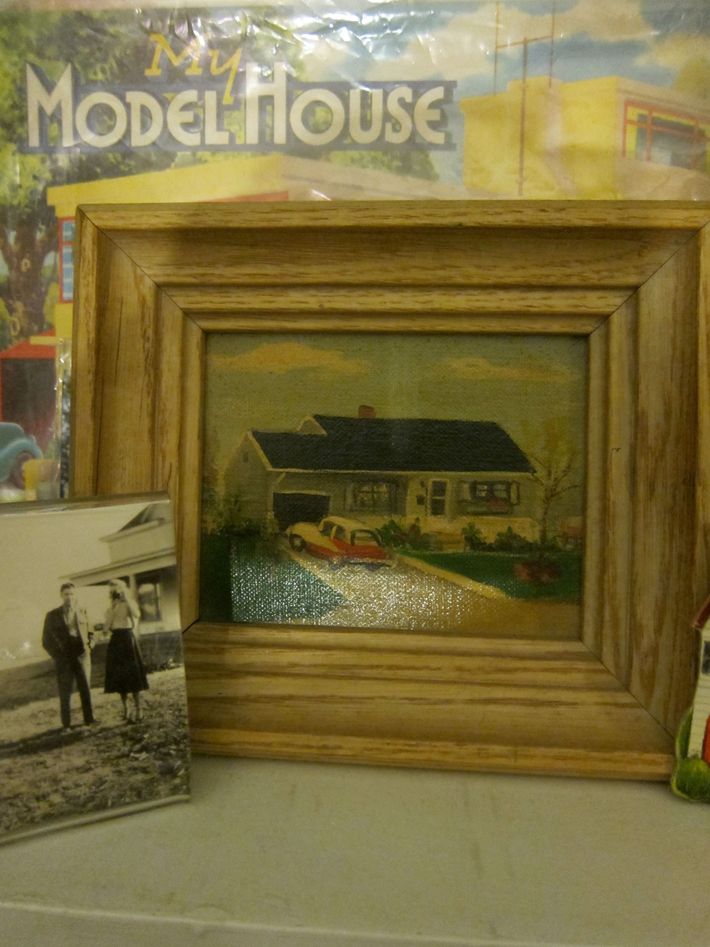
In one corner of the bookshelf stands a photograph of Beauregard’s parents, taken in the 1940s, in front of his maternal grandparents’ house in Greenfield, Missouri. “It was called Hilltop Farm and looked like a Bruce Weber location shoot. The oil painting was a gift from my friend, Paul Silver, an artist whose creation Mrs. Mouth is, among other things, the longest-running show on Manhattan public-access cable TV.”
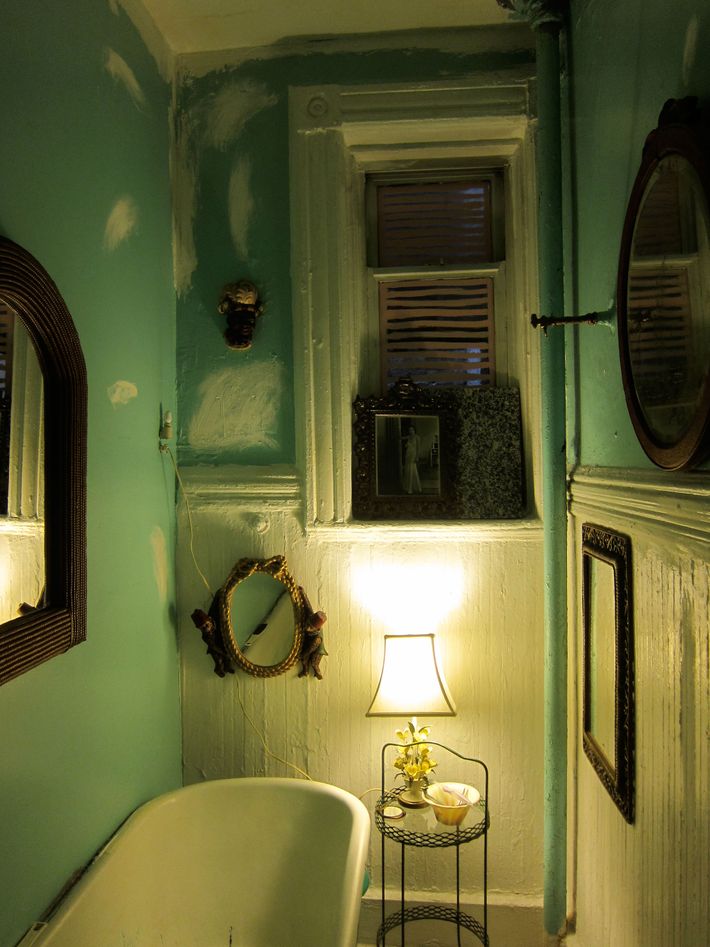
“This bathroom is the reason I decided to take the apartment in the first place — I adore the claw-foot tub, not to mention the wainscoting!” I love that Beauregard painted the pink shutters onto the window.
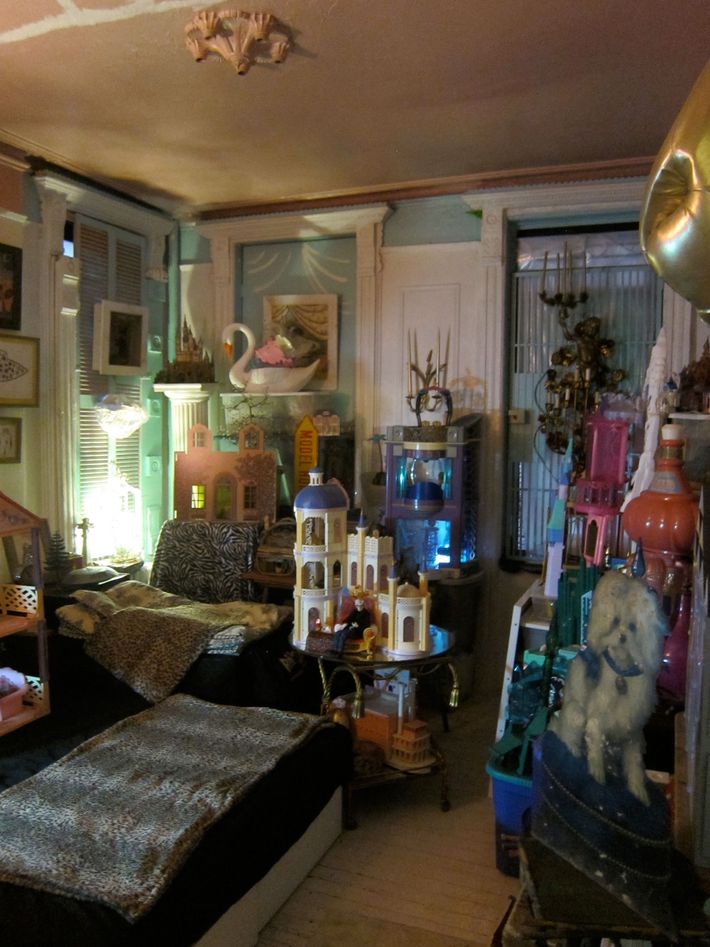
Beauregard’s bedroom was under lock and key when he first moved in, as the former tenant was using the room for his own clandestine purposes. Today, as well as serving as the bedroom, it houses select palatial dollhouses and pieces collected over the years. Beauregard adds that the spirit of his former tenant “now behaves benignly when he comes to drop in on occasion, to check things out.”





